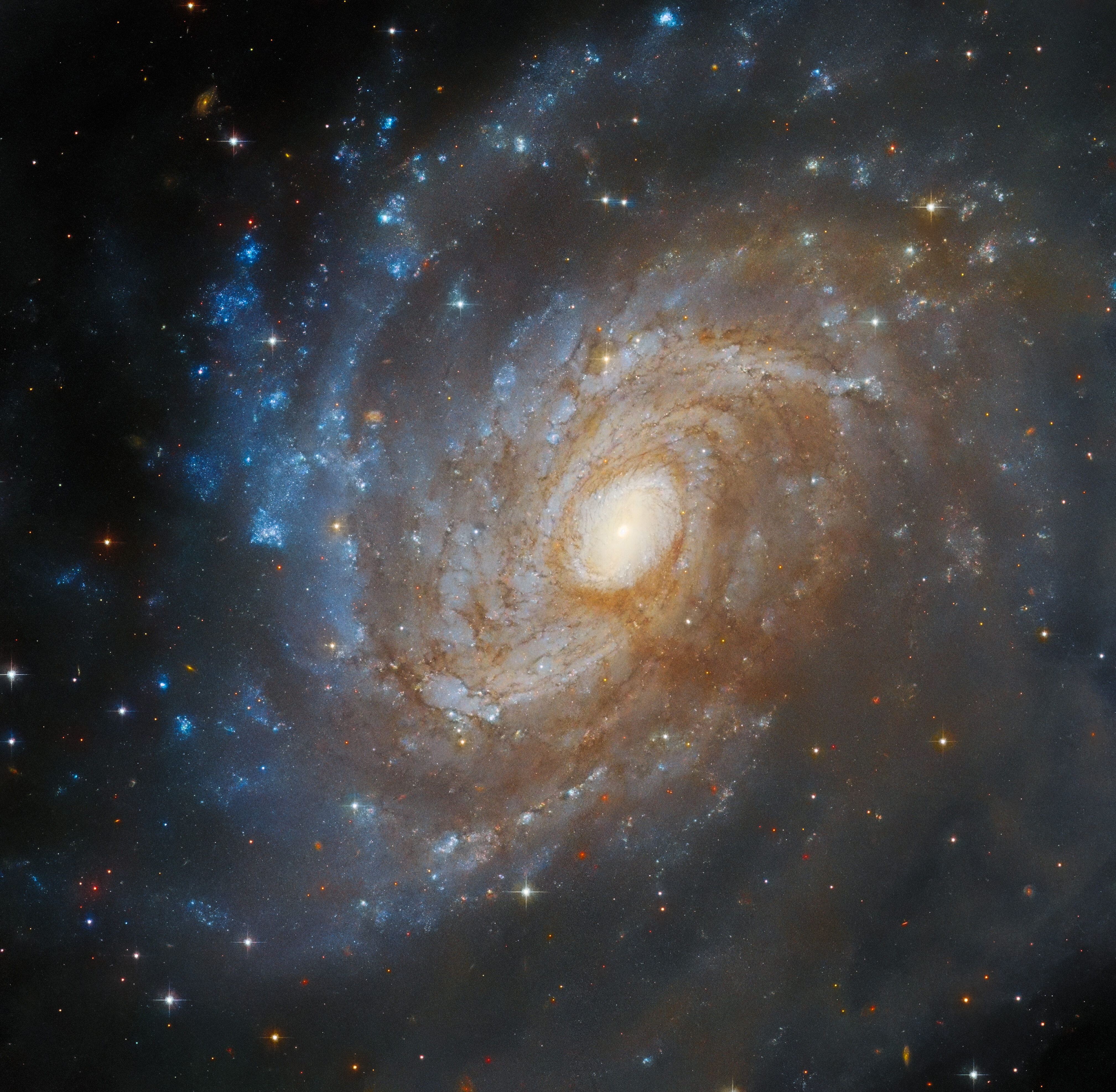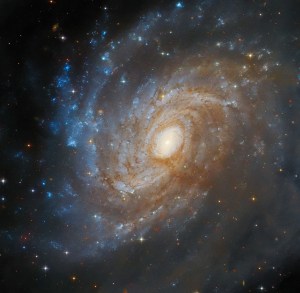
Hubble Spots a Galaxy Hidden in a Dark Cloud
The subject of this image taken with the NASA/ESA Hubble Space Telescope is the spiral galaxy IC 4633, located 100 million light-years away from us in the constellation Apus. IC 4633 is a galaxy rich in star-forming activity and also hosts an active galactic nucleus at its core. From our point of view, the galaxy is tilted mostly towards us, giving astronomers a fairly good view of its billions of stars. However, we can’t fully appreciate the features of this galaxy — at least in visible light — because it’s partially concealed by a stretch of dark dust (lower-right third of the image). This dark nebula is part of the Chamaeleon star-forming region, itself located only around 500 light-years from us, in a nearby part of our Milky Way galaxy. The dark clouds in the Chamaeleon region occupy a large area of the southern sky, covering their namesake constellation but also encroaching on nearby constellations, like Apus. The cloud is well-studied for its treasury of young stars, particularly the cloud Cha I, which both Hubble and the NASA/ESA/CSA James Webb Space Telescope have imaged. The cloud overlapping IC 4633 lies east of the well-known Cha I, II, and III, and is also known as MW9 and the South Celestial Serpent. Classified as an integrated flux nebula (IFN) — a cloud of gas and dust in the Milky Way galaxy that’s not near to any single star and is only faintly lit by the total light of all the galaxy’s stars — this vast, narrow trail of faint gas that snakes over the southern celestial pole is much more subdued looking than its neighbors. Hubble has no problem making out the South Celestial Serpent, though this image captures only a tiny part of it.
- X






















